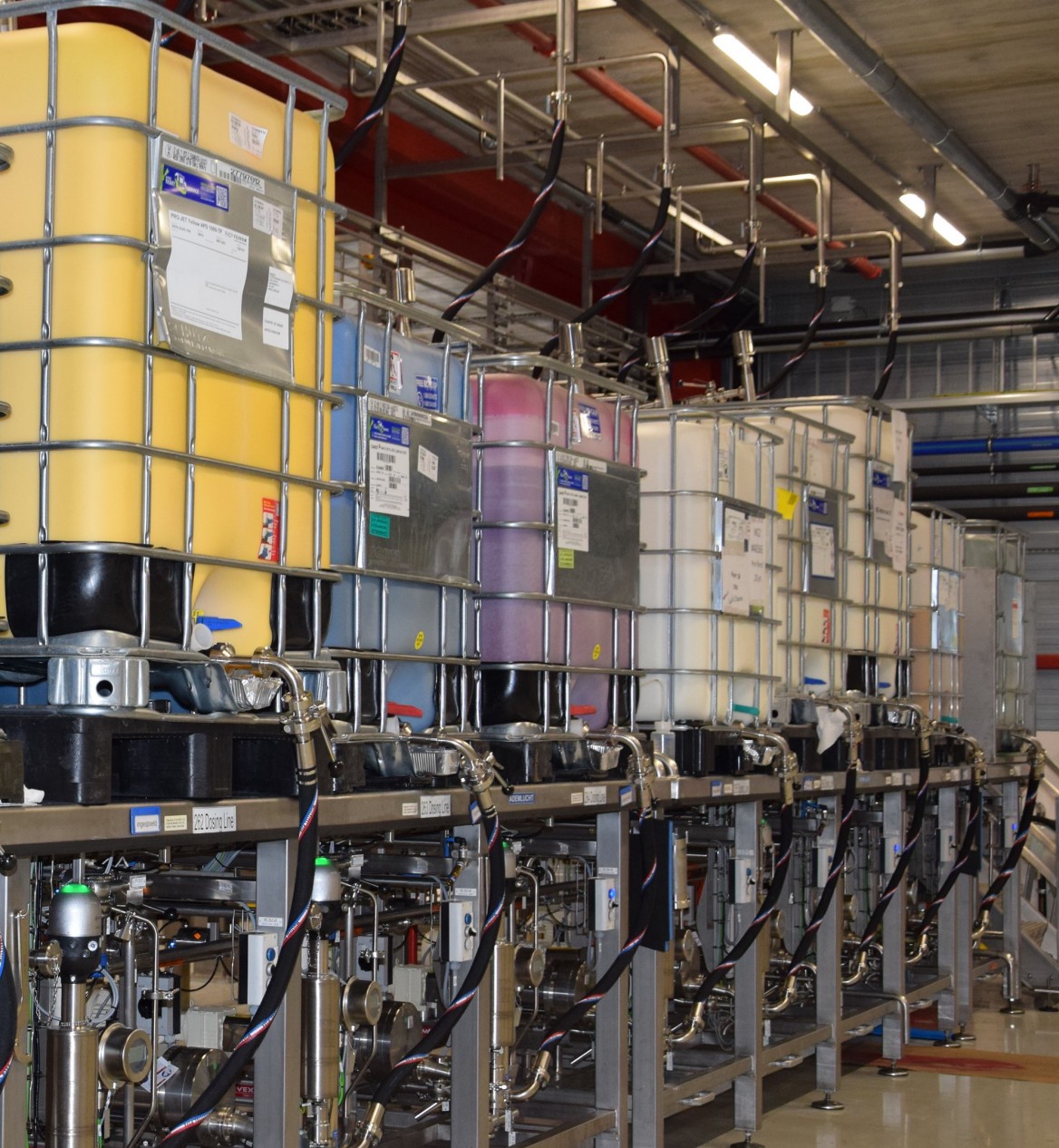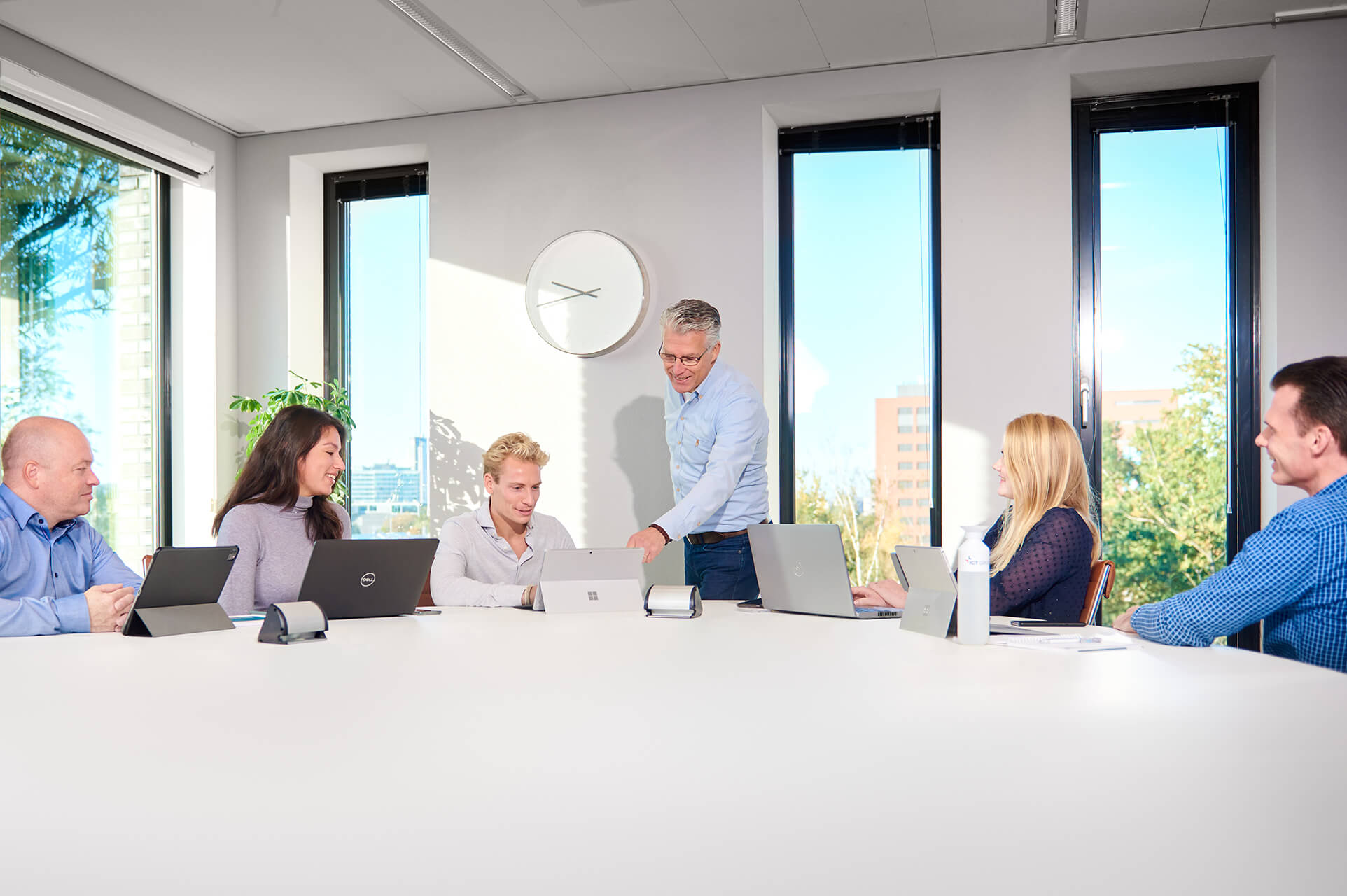
In Venlo, Canon Production Printing (previously: Océ) produces, in addition to industrial printers, also the relevant consumables, including the various inks. The business intends to strengthen its position in this market. “Previously, we only had black and white toners”, says equipment engineer Ed van Cleef. “With the construction of a pilot-plant for the production of ink in 2016, we initiated the ink production. Meanwhile we also have, in addition to this pilot-plant, several master-plants for the various inks.”
Intuitive system
Van Cleef opted for SIMATIC PCS7 from Siemens as process control for the pilot-plant. “Not a single PLC/SCADA solution can beat this. It is an intuitive system that new people can also quickly learn and work with. Process technologies can conduct a diagnosis in Batch, compose batch programs, and configure and monitor Clean in Place processes (CIP). Moreover, in view of the construction of multiple master-plants we wanted to set a software standard. We can better manage this and operators can, consequently, moreover switch between the plants. At the time, PCS7 was new to us. I had myself extensively informed about it by Siemens.”
Strong partnership
The engineering and implementation were organised by software integrator ICT Netherlands, a Solution Partner of Siemens for PCS7 and PLC/SCADA. Van Cleef: “At the time their approach of realising the project together with us strongly appealed to us. After all, it was our first introduction to PCS7 and we had to demonstrate that it worked.” After the successful pilot, during which ICT adopted an expert and flexible approach, Van Cleef decided to no longer shop around. “We were extremely pleased with the service and after-care of ICT, and we had meanwhile also become well acquainted with each other. If you keep changing partner then you waste a lot of settling-in time and money.”
Complex and challenging
In 2018 the partners jointly delivered the process control of the master-plant for the first ink. At the start of this year, the master-plant for the second ink was put into service. It is established in a former toner plant. To be able to create formulas and to produce them flexibly, like at the other two plants, SIMATIC PCS7 Batch was used. “This is a fairly complex package within the large PCS”, according to Stefan Pluis, operations manager and sr. business consultant at ICT. “It is not often used in the Netherlands. Together with Siemens, we brainstormed about the most optimum setting.” His colleague, software engineer Ralph Houppermans, adds: “At the start, it was challenging. You want a batch to run smoothly after the start. I devised a uniform construction for the pilot-plant and the master-plants to enable this. Together, Ed and I made sure that the operators can work well with it. Ed has ample production experience and knows exactly how an operator thinks.”

Joint calculations
The process control for the new master-plan was delivered, entirely according to plan, within a year. On the one hand, this could be attributed to the experience gained by ICT and Canon Production Printing from the previous plants. Every plant taught a lesson. From the onset, the partners cooperated closely with each other. For instance, they performed joint calculations. Through a monthly steering group they safeguarded the budget on the basis of the procurement. This offered the possibility of - where required - adjusting in a timely fashion.
Virtual testing
Test work and simulation contributed, to a considerable degree, to the successful project realisation. In advance, the entire plant was visualised in 3D so that you could walk through it with VR glasses in order to check the design on potential clashes. ICT simulated and tested the process control with the help of the systems from the plant. Van Cleef was closely involved in this: “By no means did I want to have the control at the plant too early. We consciously took our time for detailed test work, in order to ultimately deliver the control at exactly the right time.”
“At the time their approach of realising the project together with us strongly appealed to us. After all, it was our first introduction to PCS7 and we had to demonstrate that it worked. We were extremely pleased with the service and after-care of ICT, and we had meanwhile also become well acquainted with each other."
Ed van Cleef
Equipment engineer at Canon Production Printing
Clean in Place
The CIP processes for the cleaning of the installation between two batches comply with the requirements that are imposed on it by, among others, beer breweries and dairy factories. This is done to prevent (bio-) contamination and to guarantee a high product quality. Van Cleef: “Perhaps after some paintwork, you have left a bucket of water-based paint. It will rot. Our ink must be absolutely pure. That is why we pay attention to interim cleaning. CIP processes cannot take too long, to quickly start the next batch, but it does need to take place extremely thoroughly.”
Greenfield
The unique thing about the project is that it is a greenfield. You do not see this very often in the Netherlands anymore. “It is quite special for a programmer to be working on this”, according to Houppermans. Ed van Cleef is also beaming with pride. But of course he has been involved in the preparation of the entire project since 2014. “At the time (2014) we started thinking in a small group about how we could move from 30-millimetre bottles of ink to batches of 1900 kilogrammes a piece. Together with our mechanical engineer Antoine op het Veld I have brainstormed for half a day how we could convert this existing production hall for toners into a master-plant for latex ink. And that is also the result. Wonderful to do! As a “control architect” I could determine what would be included. It is an amazing plant, the quality shines through. Apart from the process control, Siemens also delivered many other materials, including frequency converters, remote I/O, and Profinet. 80% of this plant consists of Siemens technology.”
Anticipating development
The (large!) industrial printers of Canon are, particularly, used in the market for display graphics and graphics art. Think about, among other things, the printing of wallpaper, construction drawings, printed advertising material, posters, etc. on all potential media. They can print like greased lightning. Ever since the takeover of Océ by Canon the focus has been placed on ink jet technology. This is where Canon Production Printing wants to develop further. At the moment, ink is being produced in Venlo in quantities that keep increasing. The process installation and the control have a modular layout so that it is possible to expand quickly. “There is still ample room left in the plant for extra mixers and commodity positions”, according to Van Cleef. “The market is developing and we want to join that development.”


